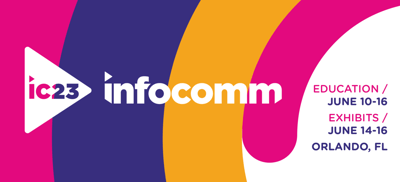by Brent Butterworth
In full-duplex communications, people on both ends of the line can talk and be heard without the two sides interfering with each other. Whether you’re using an Ethernet connection or an old analog phone line, the technology for full-duplex communication is well-established and proven over many decades—until you hook up a speakerphone.
With a standard smartphone, interference in full-duplex communications isn’t a problem. Your speech goes into the phone’s microphone, through the cellular carrier, then straight into the other person’s ear from their phone’s speaker. Because the phone’s mic picks up almost none of the sound from its speaker, there’s no concern about interference—their voice won’t interfere with your speech, and vice-versa.
With a speakerphone—or any other device used for conferencing, such as video bars, conference-room displays, and even smart speakers with video screens—the microphone can “hear” the speaker—so the mic not only picks up your voice, it also picks up the voice of the person on the other end of the line (let’s refer to them as the POOL) coming through the speaker. The conferencing device can fix the problem to some degree by blending a slightly delayed, phase-reversed version of the other person’s voice with the microphone signal, thus canceling the sound that goes straight from the speaker into the microphone.

But what about the sound that leaves the speaker, bounces around the room, then enters the microphone? That sound is much more difficult to cancel, because it’s an echo delayed by anywhere from a few milliseconds to more than 100ms, depending on the size of the room—and of course, the more reverberant the space, the greater the likelihood that the sound will reflect back into the microphone multiple times. Also, by the time the sound gets back to the microphone, its spectral content will have been altered by the acoustics of the space, making it more difficult to cancel.
Without an effective way to subtract these echoes by processing the signal coming from the microphone, the voice of the person on the other will blend with yours in unpredictable ways, interfering with the sound and producing garbled, often unintelligible results.
The answer: echo cancelling
The solution is to cancel those echoes. But it’s not easy. A digital signal processor has to distinguish between the sound you want coming into the microphone (your voice) and the sound you don’t want (the echoes of the POOL’s voice). It does this by analyzing the nature of the original signal coming from the person on the other end of the line, then analyzing the sounds coming in through the microphone and determining if they’re your voice or echoes of the POOL’s voice.
The problem gets even tougher when you consider that high-quality conferencing devices typically use three or four microphones in an array to “steer” the pickup pattern—and the echoes of the POOL’s voice will arrive at these microphones at slightly different times, and at different amplitudes. So the digital signal processor has as many as four inputs to analyze and correct, not just one.
Check out this video for a demonstration of the difficulties encountered in full-duplex voice conferencing.
To get a deep dive into challenges and solutions for full-duplex voice conferencing—and many other issues related to digital signal processing in voice applications—register for the upcoming ALTI Expo & Conference (Audio & Loudspeaker Technologies International) at the DoubleTree by Hilton Universal hotel in Orlando, Florida for a special Day 3 event. DSP Concepts, the leader in embedded audio software, will present a full-day session focused on voice comms technology for conferencing. This special ALTI Expo Day 3 event is co-hosted by the Audio Product Development Alliance.

The ALTI Expo & Conference is the leading event for audio product developers, with extensive, in-depth education sessions, displays by leading suppliers of components and measurement equipment, and a chance to network with the best minds in the business. And the DSP Concepts special Day 3 event will be the fastest, most effective way to develop the skills and knowledge you need to increase the performance of any products that receive or reproduce voices, to expand feature sets, and to satisfy end-users. We hope to see you there.
 Immediately following the ALTI Expo & Conference, join DSP Concepts at Infocomm 2023 at booth 4388 in the Conferencing & Collaboration Pavilion. Talk 1:1 with DSP Concepts conferencing experts and get live demos featuring the TalkTogether full-duplex conferencing technology built in the Audio Weaver development platform plus tools and Machine Learning IP.
Immediately following the ALTI Expo & Conference, join DSP Concepts at Infocomm 2023 at booth 4388 in the Conferencing & Collaboration Pavilion. Talk 1:1 with DSP Concepts conferencing experts and get live demos featuring the TalkTogether full-duplex conferencing technology built in the Audio Weaver development platform plus tools and Machine Learning IP.
About the Author
Brent Butterworth has been a professional audio journalist since 1989, and has written thousands of reviews and columns for numerous websites and magazines over 30-plus years in the business.
.png?width=300&name=Blog_speakerphone_v1_053123%20(1).png)


